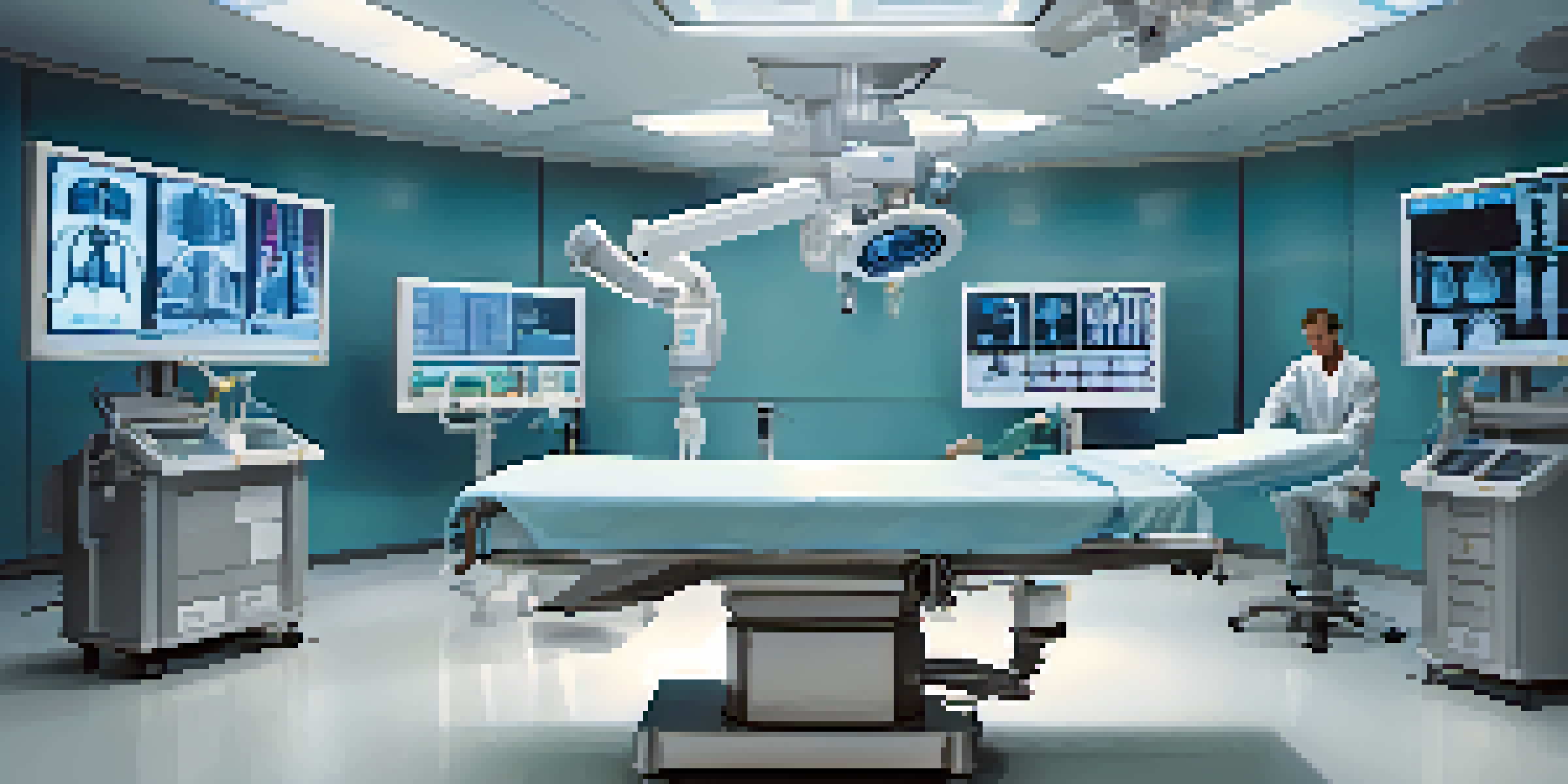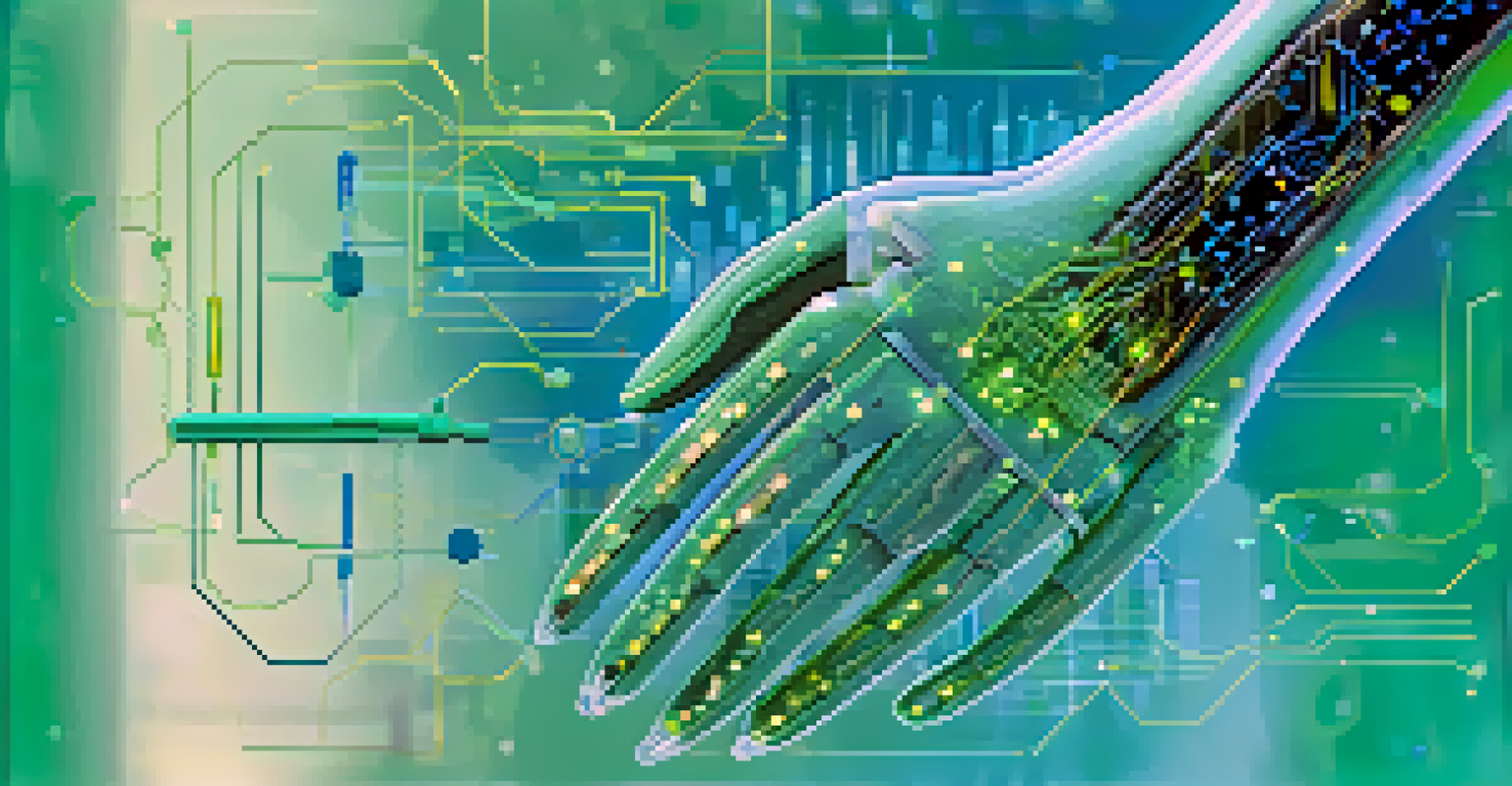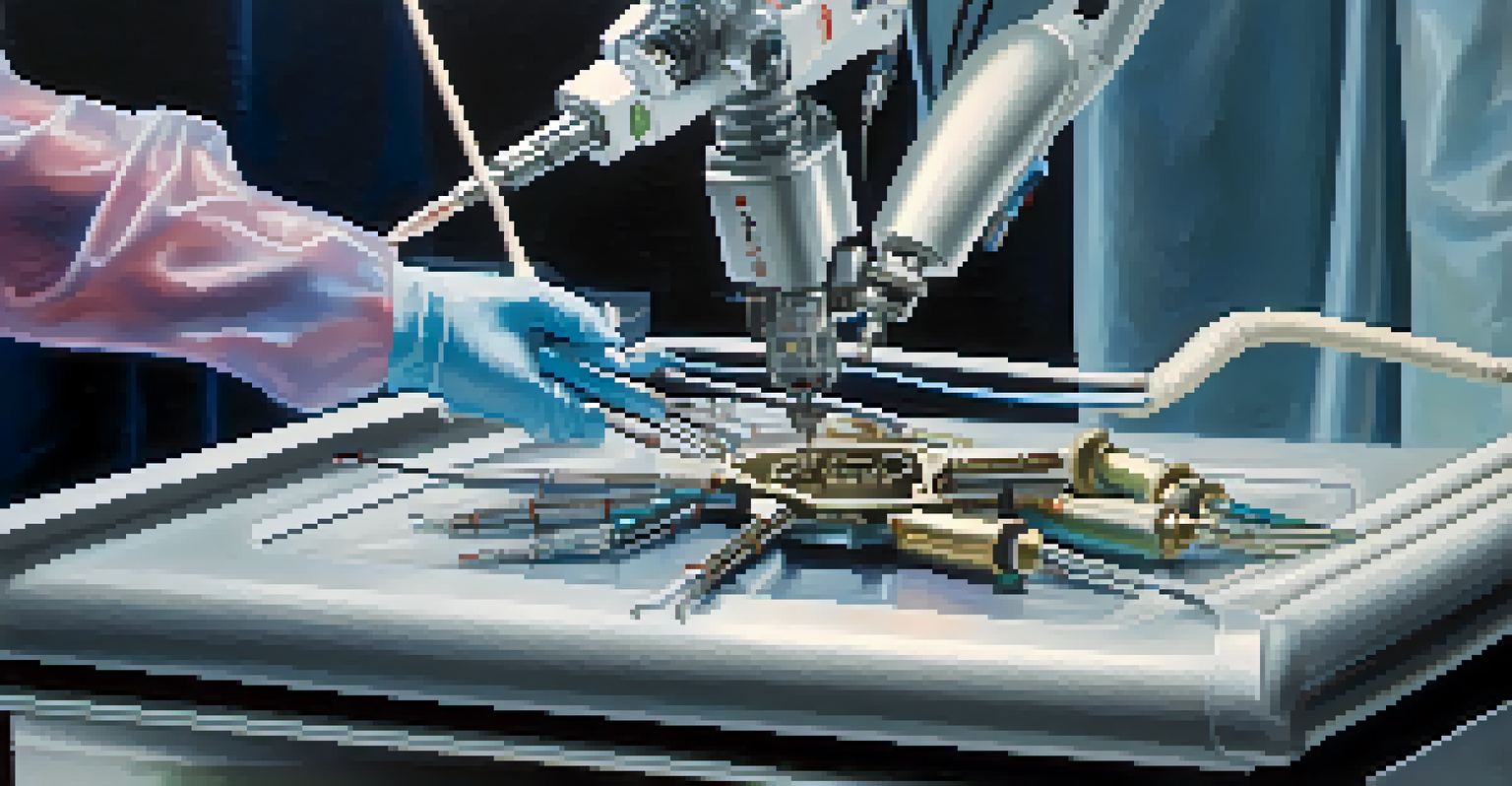The Future of Robotics in Surgery: Precision and Efficiency

Introduction to Robotics in Surgery and Its Growing Importance
Robotics in surgery has emerged as a game-changer, offering innovative solutions that enhance precision and efficiency. Surgeons are increasingly using robotic systems to perform complex procedures with greater accuracy than traditional methods. This technology not only improves patient outcomes but also reduces recovery times, making it a valuable addition to modern medicine.
Robotics is not just about machines; it's about the enhancement of human capabilities in surgery.
As the field of robotics continues to evolve, we’re seeing advancements that allow for minimally invasive surgeries, which are less traumatic for patients. The ability to perform delicate maneuvers through tiny incisions is a significant benefit, enabling quicker healing and less post-operative pain. This shift toward robotic-assisted surgery is revolutionizing how we think about surgical procedures.
Moreover, the integration of robotics in surgical settings is not just about improving techniques; it’s also about increasing accessibility. As these technologies become more widespread, they will likely be available in more hospitals, allowing a greater number of patients to benefit from advanced surgical options.
Key Technologies Driving Robotic Surgery Forward
Several key technologies are driving the evolution of robotics in surgery, including advanced imaging systems and AI algorithms. These tools provide surgeons with real-time data and enhanced visualization, allowing for more informed decision-making during operations. For instance, 3D imaging helps surgeons to plan their approach with unprecedented detail.

Artificial intelligence plays a crucial role by analyzing vast amounts of surgical data, which can lead to improved techniques and outcomes. The AI algorithms can identify patterns and suggest optimal paths for specific procedures, helping to minimize risks. This integration of AI into robotic systems is a fascinating development that is set to redefine surgical standards.
Robotic Surgery Enhances Precision
Robotic systems allow surgeons to perform complex procedures with greater accuracy and less trauma to patients.
Additionally, haptic feedback technology is enhancing the surgeon's ability to feel what they’re doing during procedures. This tactile feedback is essential in delicate operations, where precision is paramount. As these technologies improve, we can expect even greater advancements in surgical robotics.
The Benefits of Robotic Surgery for Patients
For patients, the benefits of robotic surgery are profound. One of the most significant advantages is the reduction in recovery time. Patients often experience less pain and shorter hospital stays compared to traditional surgery, which is a win-win for both patients and healthcare providers.
The future of surgery is not about replacing the surgeon; it's about augmenting their skills with technology.
Robotic surgery also minimizes the risk of complications. The precision offered by robotic systems means that there is less trauma to surrounding tissue, which can lead to fewer infections and better overall outcomes. This is particularly important for vulnerable populations who may be at higher risk during surgical procedures.
Moreover, the enhanced precision of robotic systems can lead to better cosmetic results. For many patients, the appearance of scars plays a significant role in their post-operative satisfaction. With smaller incisions made possible by robotic tools, patients often find that their recovery is not only quicker but also more aesthetically pleasing.
Challenges and Limitations of Robotic Surgery
While robotic surgery offers numerous benefits, it is not without its challenges. The initial cost of investing in robotic systems can be a significant barrier for many hospitals. These systems require substantial financial commitment, which can be difficult for smaller medical facilities to manage.
Moreover, there is a learning curve associated with robotic surgery. Surgeons must undergo extensive training to master the use of robotic systems, which can take time and resources. Ensuring that medical professionals are adequately trained is crucial to maximizing the benefits of this technology.
AI Drives Surgical Innovation
Artificial intelligence is revolutionizing robotic surgery by analyzing data to improve techniques and patient outcomes.
Additionally, there are certain limitations to the types of procedures that can be performed robotically. Not all surgeries are suited to robotic assistance, and in some cases, traditional methods may still be preferable. Understanding these limitations is essential for both surgeons and patients when considering surgical options.
The Role of Artificial Intelligence in Surgical Robotics
Artificial intelligence (AI) is transforming the landscape of robotic surgery by enabling machines to learn from past surgical data. These intelligent systems can analyze outcomes and refine techniques based on a vast array of information, leading to improved surgical precision. This shift towards data-driven decisions is paving the way for future advancements.
AI can also assist surgeons in real-time during procedures, providing insights that enhance decision-making. For example, AI algorithms can alert surgeons to potential complications or suggest alternative approaches based on previous patient data. This level of support is invaluable, especially in high-stakes environments.
Furthermore, machine learning can help in predicting patient outcomes, allowing for more personalized surgical plans. By understanding a patient’s unique physiology and medical history, AI can aid in tailoring surgical approaches that maximize the chances of success. This personalized approach is a significant step forward in patient care.
Future Trends in Robotic Surgery
Looking ahead, we can anticipate several exciting trends in robotic surgery. One major trend is the development of smaller, more versatile robotic systems that can be used across various surgical disciplines. This flexibility will allow for a broader range of procedures to be performed robotically, making advanced surgical options more accessible.
Additionally, advancements in telemedicine are likely to influence robotic surgery. Surgeons may soon be able to operate robotic systems remotely, which could be a game-changer for patients in rural or underserved areas. This capability would not only expand access to specialized care but also enable real-time collaboration among medical professionals worldwide.
Future Trends Expand Accessibility
Advancements in telemedicine and smaller robotic systems are set to make robotic surgery more accessible to diverse patient populations.
Finally, the integration of augmented reality (AR) into robotic surgery is on the horizon. AR can provide surgeons with overlays of critical data during procedures, enhancing their ability to navigate complex surgical environments. This fusion of technology promises to further increase the precision and efficiency of robotic-assisted surgeries.
Conclusion: The Promising Future of Robotics in Surgery
In conclusion, the future of robotics in surgery is bright, with numerous technological advancements poised to enhance precision and efficiency. As robotic systems become more sophisticated and widely adopted, we can expect to see significant improvements in patient care and surgical outcomes. The combination of robotics and AI is creating a new era in surgery that holds immense potential.
While there are challenges to overcome, such as costs and training requirements, the benefits far outweigh these obstacles. With continued investment in research and development, robotic surgery will likely become the standard rather than the exception. This evolution will enable surgeons to provide better care while reducing risks for patients.

Ultimately, as we embrace this innovative technology, we must remain committed to ensuring that all patients have access to the best surgical options available. The integration of robotics in surgery is not just about technology; it’s about improving lives and making healthcare more effective and efficient for everyone.